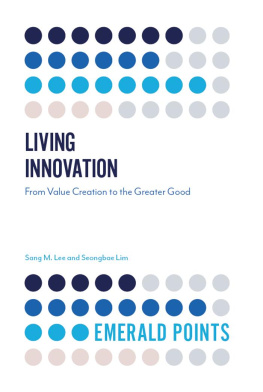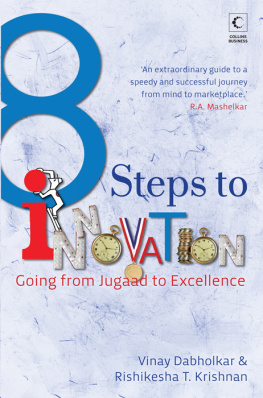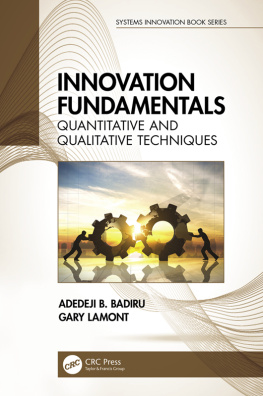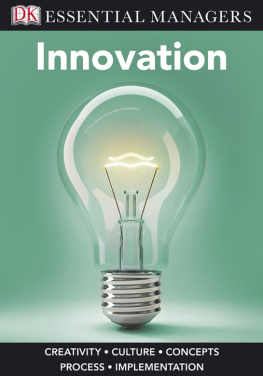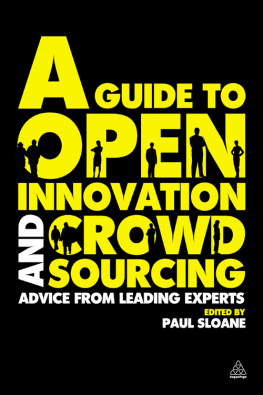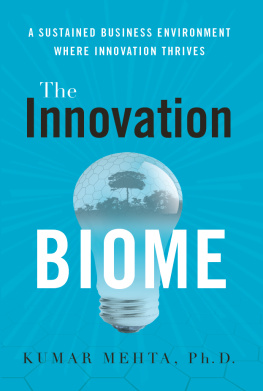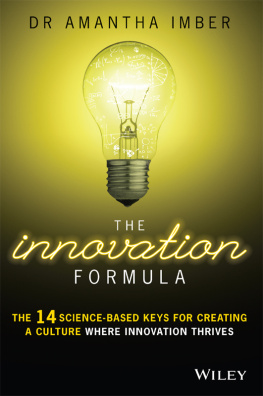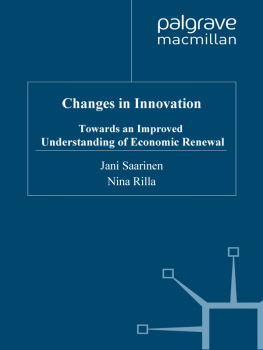LIVING INNOVATION
From Value Creation to the
Greater Good
LIVING INNOVATION
From Value Creation to the Greater Good
BY
SANG M. LEE
University of Nebraska-Lincoln, USA
SEONGBAE LIM
St. Marys University, USA

Emerald Publishing Limited
Howard House, Wagon Lane, Bingley BD16 1WA, UK
First edition 2018
Copyright Sang M. Lee and Seongbae Lim. Published under exclusive licence.
Reprints and permissions service
Contact:
No part of this book may be reproduced, stored in a retrieval system, transmitted in any form or by any means electronic, mechanical, photocopying, recording or otherwise without either the prior written permission of the publisher or a licence permitting restricted copying issued in the UK by The Copyright Licensing Agency and in the USA by The Copyright Clearance Center. Any opinions expressed in the chapters are those of the authors. Whilst Emerald makes every effort to ensure the quality and accuracy of its content, Emerald makes no representation implied or otherwise, as to the chapters suitability and application and disclaims any warranties, express or implied, to their use.
British Library Cataloguing in Publication Data
A catalogue record for this book is available from the British Library
ISBN: 978-1-78756-716-0 (Print)
ISBN: 978-1-78756-713-9 (Online)
ISBN: 978-1-78756-715-3 (Epub)

ACKNOWLEDGMENTS
We dedicate this book to our families, who have been the source of our passion for learning, writing, and sharing. They sacrificed many weekends without our participation in family activities.
We benefited a great deal from our discussions with our colleagues, former students, and current students about the current state of innovation and the aspirational path of its future. We received the inspiration to research the concept of Living Innovation from these discussions.
We gained much real-world insights from our participation in the funded project directed by Dr Soon-Goo Hong of Dong-A University in Korea. Thus, we acknowledge that this work was supported by the Ministry of Education of the Republic of Korea and the National Research Foundation of Korea (NRF-2015S1A3A2046781).
CONTENTS
LIST OF FIGURES
Prelude |
Chapter 2 |
Chapter 4 |
Chapter 5 |
Chapter 8 |
Chapter 9 |
ABOUT THE AUTHORS
Sang M. Lee, PhD, is University Eminent Scholar and Distinguished University Professor Emeritus at the University of Nebraska-Lincoln, USA. His seminal work on multiple objective decision-making, global strategy, innovation, and convergence revolution has been globally recognized. He has published over 50 books and 350 plus journal articles and delivered over 500 speeches in more than 350 universities and professional organizations in 70 countries. He is Fellow of the Academy of Management, Decision Sciences Institute (DSI), and Pan-Pacific Business Association (PPBA). He directed large US government projects in Eastern Europe, Central Asia, and Southeast Asian countries over 15 years. He served as President of DSI and currently serving as President of PPBA. He has received five honorary degrees, the Presidential Medal of the Albanian government, and Distinguished Global Leadership Award from PPBA. He currently serves as Editor in Chief of Service Business and International Journal of Quality Innovation (both are publications of Springer) and Senior Scientist of the Gallup Organization. He has produced 140 PhDs during his university-teaching career. His most recent book is Convergenomics (2010), published by Gower Publishers in the UK.
Seongbae Lim, PhD, is Professor of information systems and Chair of Department of Finance and Quantitative Management at St Marys University, USA. His prior teaching experience includes the University of Nebraska and State University of New York. Lim specializes his teaching and research interests in the areas of innovation management, service management, and entrepreneurship. Recent works have appeared in Service Industries Journal, International Entrepreneurship and Management Journal, and Service Business. He has done more than one hundred special lectures and keynote speeches about innovation and convergence management for world-renowned institutes, such as University of California at Berkeley, Peking University, Seoul National University, and The National Assembly of the Republic of Korea. Lim is active in the Association of Information Systems, Decision Science Institute, Korea Academy of Management, and Pan Pacific Business Association. He has also served as an Editorial Board Member for Service Business, Korea Association of Information Systems and Management, and Journal of Convergence Information Technology. Lim has been selected for Marquis Whos Who in America along with Whos Who in the World since 2005. The International Herald Tribune has featured Dr Lim regarding his role in building the relationship between US and Korean universities. In addition, as a columnist, Lim contributes regularly about spiritual capital to Guideposts. Dr Lim has been a visiting research fellow of Asian Community Research Center at Jeju National University, Korea. He also has been a St Marys representative to the United Nations. Lim got his PhD from University of Nebraska at Lincoln.
PRELUDE
P.1 HUMAN HISTORY AND INNOVATION
The human history can be summarized as a continuous struggle for innovation and value creation. In the hunting and gathering economy, humans worked day and night to search for food, adequate shelter, and clothing. They had limited choices and often had to do with whatever they could find. However, with accumulated experience and knowledge of the environment, humans began to innovate to make better weapons, tools, and collaborate with others for creating value. Soon people began to learn how to cultivate crops and store the harvest, and also domesticate animals, to have a more comfortable living with a steady supply of food throughout the seasons. Thus, the agricultural economy was born.
With the advanced knowledge for toolmaking and producing goods and services, technological development ensued. With the arrival of Industrial Revolution, organizations were formed to systemize the blending of machines and manpower. In the nineteenth and twentieth centuries, a massive industrialization took place for mass production of goods in factories. The continuous innovation efforts for more effective and efficient production, supply chain, and services lead to the consumer-centric age, supported by technological advances for data processing and automation. The information revolution led to the full-blown Internet-based Industry 4.0 and digital economy where computers are used not only for designing smart factories but also for knowledge creation and sharing for improved quality of life. Several megatrends also occurred simultaneously, notably globalization, changing industry mix, changing demographics, the exploding emerging economies, and the increased concern for the environment.

